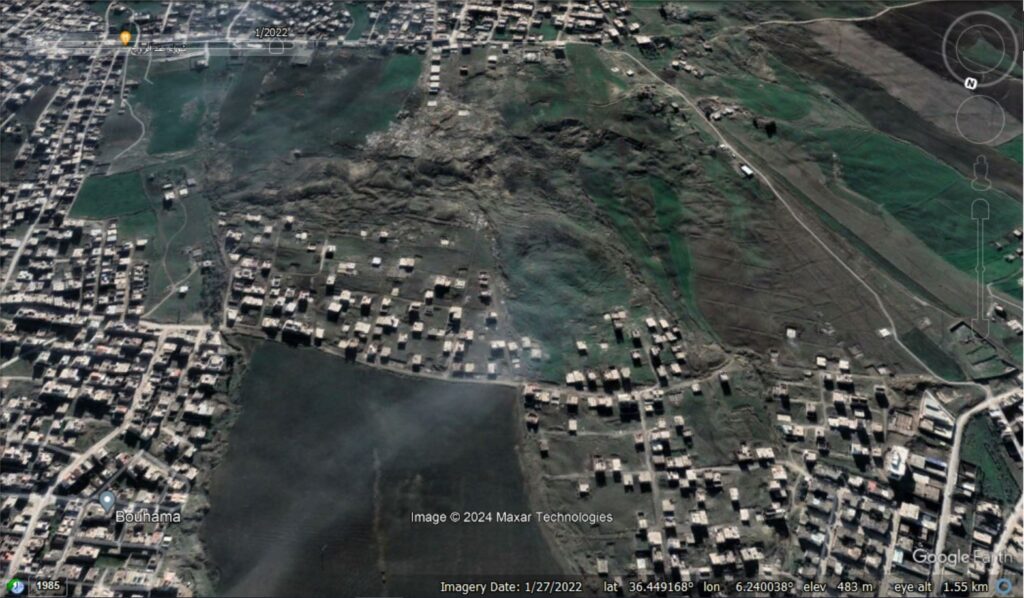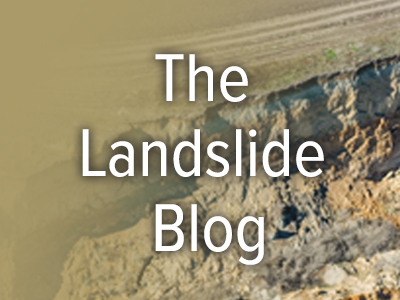The Landslide Blog is written by Dave Petley, who is widely recognized as a world leader in the study and management of landslides.
There is an interesting article (Bourenane and Mezouar 2024) in the Bulletin of Engineering Geology and the Environment about the El Kherba landslide in Algeria, which was reactivated by the 7 August 2020 Mila earthquake. Algeria is a country that has rarely featured on this blog, but parts of the country have a substantial landslide problem.
The El Kherba landslide is interesting for a number of reasons, and the authors have done a really good job of providing a comprehensive overview of the challenges that the slope presents. The failure is large – Bourenane and Mezouar (2024) calculate that it is about 2,170 m long and 1,800 m wide, with a volume of about 26 million cubic metres. It is located at [36.4484, 6.2391].
This is a Google Earth image of the site in February 2020, before the reactivation:-

It is apparent from the image that this slope was already subject to instability, although it was not active prior to the earthquake.
This is the same site in January 2022:-

And here is an image compare that highlights the impact of reactivation of the slope by the earthquake:-


The impact of the landslide was substantial – Bourenane and Mezouar (2024) indicate that it caused damage to 1,055 buildings, “including a primary school, a middle school, roads, and two water supply reservoirs”.
A second very interesting aspect of this landslide is the trigger event. On 7 August 202, the Mw=4.9 Mila earthquake occurred about 10 km to the northeast of the site, which was sufficient to reactivate the landslide. Eyewitnesses observed signs of instability 15 minutes after the mainshock, so we can be confident that this induced failure.
This is an unusually small event to trigger major instability – Bourenane and Mezouar (2024) suggest that rainfall in the weeks leading up to the failure may have played a key role in inducing potential instability. Modelling suggests that the local peak ground accelerations may also have been quit high despite the modest scale of the earthquake.
This is a really interesting study that once again underscores the complex ways in which seismic loading can lead to damaging instability, even when the magnitude of the event is small. It seems likely that a very substantial proportion of the damage caused by this earthquake was the result of slope instability.
Reference
Bourenane, H. and Mezouar, N. 2024. Geomorphological, hydrogeological and geotechnical characteristics of the El Kherba large, deep-seated landslide induced by the August 7th, 2020 (Mw 4.9) earthquake in the city of Mila, northeast Algeria. Bulletin of Engineering Geology and the Environment 83, 288 (2024). https://doi.org/10.1007/s10064-024-03781-z


